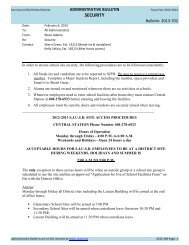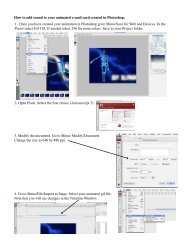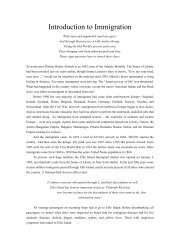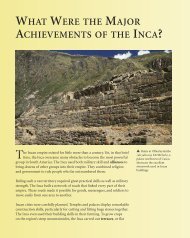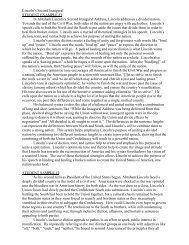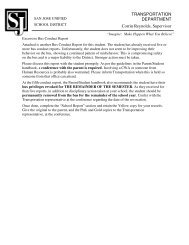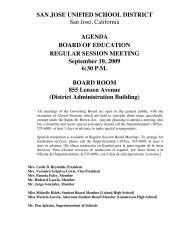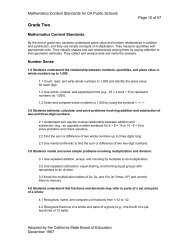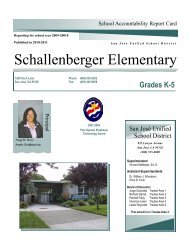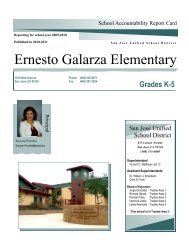Visual and Performing Arts Content Standards - California ...
Visual and Performing Arts Content Standards - California ...
Visual and Performing Arts Content Standards - California ...
You also want an ePaper? Increase the reach of your titles
YUMPU automatically turns print PDFs into web optimized ePapers that Google loves.
GLOSSARY OF TERMS USED IN THE MUSIC CONTENT STANDARDS<br />
embellishments: Notes added to ornament a melody or rhythmic pattern.<br />
melodic <strong>and</strong> rhythmic<br />
form The organization <strong>and</strong> structure of a composition <strong>and</strong> the interrelationships of<br />
musical events within the overall structure.<br />
fugue A composition in which three or more voices enter one after the other <strong>and</strong><br />
imitate the main melody in various ways according to a set pattern.<br />
genre Type or kind of musical work (e.g., opera, jazz, mariachi).<br />
harmonic progression A succession of individual chords or harmonies that form larger units of<br />
phrases, sections, or compositions.<br />
harmony The simultaneous sounding of two or more tones.<br />
idiophone A musical instrument, the sound of which is produced by shaking or scraping.<br />
improvisation Spontaneous creation of music.<br />
interval The distance in pitch between two tones.<br />
levels of difficulty The levels of difficulty for the musical content st<strong>and</strong>ards are as follows:<br />
Level 1: very easy; easy keys, meters, <strong>and</strong> rhythms; limited ranges.<br />
Level 2: easy; may include changes of tempo, key, <strong>and</strong> meter; modest ranges.<br />
Level 3: moderately easy; contains moderate technical dem<strong>and</strong>s, exp<strong>and</strong>ed<br />
ranges, <strong>and</strong> varied interpretive requirements.<br />
Level 4: moderately difficult; requires well-developed technical skills, attention<br />
to phrasing <strong>and</strong> interpretation, <strong>and</strong> ability to perform various<br />
meters <strong>and</strong> rhythms in a variety of keys.<br />
Level 5: difficult; requires advanced technical <strong>and</strong> interpretive skills; contains<br />
key signatures with numerous sharps or flats, usual meters, complex<br />
rhythms, subtle dynamic requirements.<br />
Level 6: very difficult; suitable for musically mature students of exceptional<br />
competence.<br />
major key Tonally, a key based on a major scale; a scale that contains the following step<br />
pattern: whole, whole, half, whole, whole, whole, half; or uses the sol-fa tones<br />
of do, re, mi, fa, so, la, ti, do.<br />
melody An organized sequence of single notes.<br />
membranophone An instrument that produces sound through the vibrations of a membrane.<br />
meter The grouping of beats by which a piece of music is measured.<br />
minor key Tonally, a key based on a minor scale; a scale that contains the following step<br />
pattern: whole, half, whole, whole, half, whole, whole; or uses the sol-fa tones<br />
of la, ti, do, re, me, fa, so, la.<br />
mixed meter A mixture of duple <strong>and</strong> triple meters.<br />
mode A type of scale with a specific arrangement of intervals (e.g., Aeolian, Dorian,<br />
Ionian, Locrian, Lydian, Mixolydian, Phrygian).<br />
77




